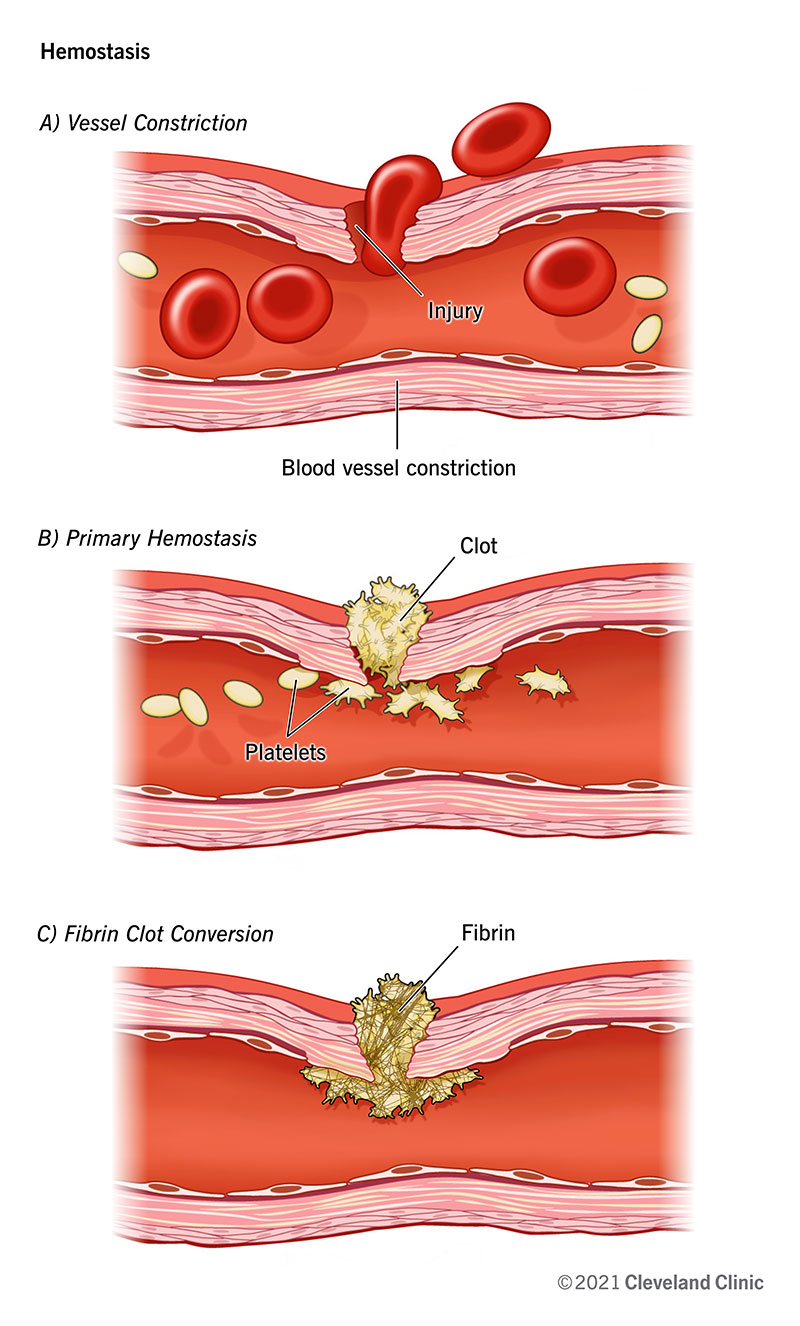Pathobiochemistry
9. Blood, blood plasma proteins. Blood clotting, coagulopathy. Dysproteinaemias. Porphyrins. Biosynthesis, metabolism disorders. Porphyria, hemoglobinopathies.
- Hemostasis is the natural process that stops blood loss when an injury occurs.It involves three steps: (1) vascular spasm ( vasoconstriction ); (2) platelet plug formation; and (3) coagulation.
- Vasoconstriction is a reflex in which blood vessels narrow to increase blood pressure.
- Next, platelet plug formation involves the activation, aggregation, and adherence of platelets into a plug that serves as a barrier against blood flow.
- Coagulation involves a complex cascade in which a fibrin mesh is cleaved from fibrinogen.
- Fibrin acts as a “molecular glue” during clot formation, holding the platelet plug together.
Key Terms
- hemostasis: The process of slowing and stopping the flow of blood to initiate wound healing.
- coagulation: The process by which blood forms gelatinous clots.
- heparin: A fibrinolytic molecule expressed on endothelial cells or produced as a blood thinner medicine. It prevents activation of platelets and clotting factors.
Hemostasis is the natural process in which blood flow slows and a clot forms to prevent blood loss during an injury, with hemo- meaning blood, and stasis meaning stopping. During hemostasis, blood changes from a fluid liquid to a gelatinous state.
Steps of Hemostasis
Hemostasis includes three steps that occur in a rapid sequence:
(1) vascular spasm, or vasoconstriction, a brief and intense contraction of blood vessels;
(2) formation of a platelet plug; and
(3) blood clotting or coagulation, which reinforces the platelet plug with fibrin mesh that acts as a glue to hold the clot together. Once blood flow has ceased, tissue repair can begin.
